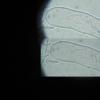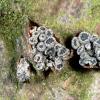
24-12-2025 17:08
Hulda Caroline HolteHello, I have found this propoloid ascomycete on

21-12-2025 09:32
Hello.A tiny ascomycete found embedded in wood in

21-12-2025 21:32
Pol DebaenstHello, Garden, Burgweg 19, Veurne, BelgiumOn 10/1

22-12-2025 23:38
Patrice TANCHAUDBonsoir, récolte sur un mur en pierre, apothéci

22-12-2025 00:47
Patrice TANCHAUDBonsoir, récolte à proximité du milieu dunaire
Tympanis hypodontia ?
Michel RIMBAUD,
21-02-2017 23:03
J'ai récolté ce petit asco sur écorce d'Abies.
Isolé, diam 0,28mm, noir +/- verdâtre.
Asques 17-20x125µ remplies de petites granules.
J'ai pensé à Tympanis hypodontia, qu'en pensez-vous ?
Michel.
Hans-Otto Baral,
22-02-2017 06:30

Re : Tympanis hypodontia ?
I think without oil immersion or a largermagnification it is impossible.
Tympanis species have 8 (primary) ascospores which germinate inside the living ascus to form ascoconidia. These primary spores differ between the species, being septate in some species, also the germ tubes differ. So you need to search for immature asci.
Tympanis species have 8 (primary) ascospores which germinate inside the living ascus to form ascoconidia. These primary spores differ between the species, being septate in some species, also the germ tubes differ. So you need to search for immature asci.
Michel RIMBAUD,
23-02-2017 12:24
Re : Tympanis hypodontia ?
Looking in detail through the little piece of bark I kept near me I finaly found 1 youngest specimen with un ascus containing a few primary spores.
They are ellipsoid 3,8 x 5,8µ with a garminal tube about 6µ long.
Trying the key from R.K. Schumacher, I didn't succeed in a sure identification.
My preference would be T.truncatula because of the smaller size than the others (neopithya and piceae). T.hypopodia has clearly smaller ascus than my specimen.
Your opinion ?
Michel
They are ellipsoid 3,8 x 5,8µ with a garminal tube about 6µ long.
Trying the key from R.K. Schumacher, I didn't succeed in a sure identification.
My preference would be T.truncatula because of the smaller size than the others (neopithya and piceae). T.hypopodia has clearly smaller ascus than my specimen.
Your opinion ?
Michel
Hans-Otto Baral,
23-02-2017 12:55

Re : Tympanis hypodontia ?
Which article is this Schumacher key?
I only know Ouellette & Pirozynski, here attached.
I only know Ouellette & Pirozynski, here attached.
Michel RIMBAUD,
23-02-2017 14:00
Re : Tympanis hypodontia ?
Thank you Zotto for the document you sent to me, I will try with it.
I didn't suceed sending you the key I used through the forum page, I send you by email.
Michel
I didn't suceed sending you the key I used through the forum page, I send you by email.
Michel
Hans-Otto Baral,
23-02-2017 15:56

Re : Tympanis hypodontia ?
Thanks for the key. The genus is difficult and I think you need several young asci with germinating spores to be sure. If there is never a septum then the key unmistakably leads to neopithya and piceae. I did not compare what Ouellette & Pir. say.
Michel RIMBAUD,
23-02-2017 18:05
Re : Tympanis hypodontia ?
I went one more time on the site to collect parts of bark on the same tree.
Finally I found other immature ascus with germinated spores inside.
I didn't see any septa, the mesures of the spores give Q = 1,25 and 1,36.
With the key I sent you it fits with T.neopithya (not T.picea --> Q=2).
But it does not fit with the key from Ouellette-amp-Pirozynsk wich gives T.neopithya in Fig.A1 with club shaped germ cells. Mine are clearmy cylindrical.
So I think it is T.alnea according to Ouelette key.
It fits well too with Schumacher key, except for the host (see point 9(8) ..."anderen LGH").
Finally I found other immature ascus with germinated spores inside.
I didn't see any septa, the mesures of the spores give Q = 1,25 and 1,36.
With the key I sent you it fits with T.neopithya (not T.picea --> Q=2).
But it does not fit with the key from Ouellette-amp-Pirozynsk wich gives T.neopithya in Fig.A1 with club shaped germ cells. Mine are clearmy cylindrical.
So I think it is T.alnea according to Ouelette key.
It fits well too with Schumacher key, except for the host (see point 9(8) ..."anderen LGH").
Lothar Krieglsteiner,
23-02-2017 18:21

Re : Tympanis hypodontia ?
Thanks, Zotto, for the paper of Oulette & al.!
I would also be interested in the Schumacher key ...
Best regards, Lothar
Hans-Otto Baral,
23-02-2017 18:23

Re : Tympanis hypodontia ?
Hmm, T. alnea is a frequent species on angiosperms, I never heard of gymnosperm hosts. T. alnea has abundant crystals on the apothecial exterior, causing a greyish-white pruina in the dry state, and I think I remember that such crystals were not stressed enough by authors. Also T. alnea always grows fasciculate.
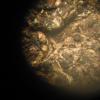
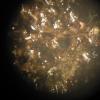
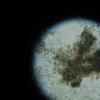
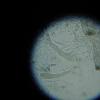
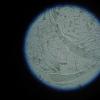
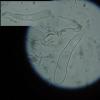
 Ouellette-amp-Pirozynski-1973-Tympanis-0001.pdf
Ouellette-amp-Pirozynski-1973-Tympanis-0001.pdf